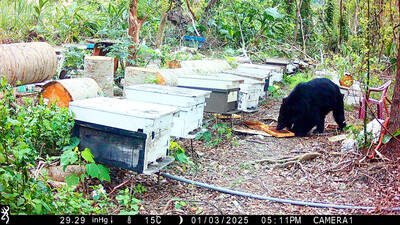The Chinese Nationalist Party (KMT) yesterday confirmed that 20 party employees have been made redundant before the Lunar New Year holiday next month, saying it is a necessary decision given the party’s financial situation.
“It is true that after the KMT’s completion of its year-end performance evaluation, 20 party staff have been laid off,” KMT Culture and Communications Committee deputy director-general Hung Meng-kai (洪孟楷) said.
The 20 employees, who are slated to leave their posts at the end of this month, are spread across different divisions and were selected based on performance evaluations and their divisions’ future needs, Hung said.
“It was done with reluctance, but it is a necessary adjustment due to the party headquarters’ financial difficulties,” he said.
Hung made the remarks hours after the Chinese-language newspaper Apple Daily cited an anonymous source as saying that the retrenched staff include KMT Central Policy Committee Executive Secretary Chiu Chih-cheng (邱志誠) and other entry-level employees.
The newspaper also quoted a staff member accusing the KMT of lying about the layoff plan before.
Earlier this month, the KMT had rejected rumors of a second wave of layoffs, saying that even though the party could not afford to offer its employees a pay raise, it wanted them to be at ease.
The first wave saw 738 staff made redundant and 310 rehired on fixed-term contracts in January last year, which was part of the KMT’s attempt to streamline the party amid the Executive Yuan’s Ill-gotten Party Assets Settlement Committee’s ongoing efforts to recover the party’s illegitimately gained assets.
Hung yesterday said that the reason for the latest batch of layoffs was again due to the assets committee’s “attack on the KMT,” which had left the party cash-strapped.
“I believe the employees who have to leave their posts will understand the difficulties the party is facing at the moment,” Hung said, adding that several party cadres have chosen to work for the party without any pay.

SHIPS, TRAINS AND AUTOMOBILES: The ministry has announced changes to varied transportation industries taking effect soon, with a number of effects for passengers Beginning next month, the post office is canceling signature upon delivery and written inquiry services for international registered small packets in accordance with the new policy of the Universal Postal Union, the Ministry of Transportation and Communications said yesterday. The new policy does not apply to packets that are to be delivered to China, the ministry said. Senders of international registered small packets would receive a NT$10 rebate on postage if the packets are sent from Jan. 1 to March 31, it added. The ministry said that three other policies are also scheduled to take effect next month. International cruise ship operators

NUMBERS IMBALANCE: More than 4 million Taiwanese have visited China this year, while only about half a million Chinese have visited here Beijing has yet to respond to Taiwan’s requests for negotiation over matters related to the recovery of cross-strait tourism, the Tourism Administration said yesterday. Taiwan’s tourism authority issued the statement after Chinese-language daily the China Times reported yesterday that the government’s policy of banning group tours to China does not stop Taiwanese from visiting the country. As of October, more than 4.2 million had traveled to China this year, exceeding last year. Beijing estimated the number of Taiwanese tourists in China could reach 4.5 million this year. By contrast, only 500,000 Chinese tourists are expected in Taiwan, the report said. The report

The Forestry and Nature Conservation Agency yesterday launched a gift box to market honey “certified by a Formosan black bear” in appreciation of a beekeeper’s amicable interaction with a honey-thieving bear. Beekeeper Chih Ming-chen (池明鎮) in January inspected his bee farm in Hualien County’s Jhuosi Township (卓溪) and found that more than 20 beehives had been destroyed and many hives were eaten, with bear droppings and paw prints near the destroyed hives, the agency said. Chih returned to the farm to move the remaining beehives away that evening when he encountered a Formosan black bear only 20m away, the agency said. The bear

Chinese embassy staffers attempted to interrupt an award ceremony of an international tea competition in France when the organizer introduced Taiwan and displayed the Republic of China flag, a Taiwanese tea farmer said in an interview published today. Hsieh Chung-lin (謝忠霖), chief executive of Juxin Tea Factory from Taichung's Lishan (梨山) area, on Dec. 2 attended the Teas of the World International Contest held at the Peruvian embassy in Paris. Hsieh was awarded a special prize for his Huagang Snow Source Tea by the nonprofit Agency for the Valorization of Agricultural Products (AVPA). During the ceremony, two Chinese embassy staffers in attendance